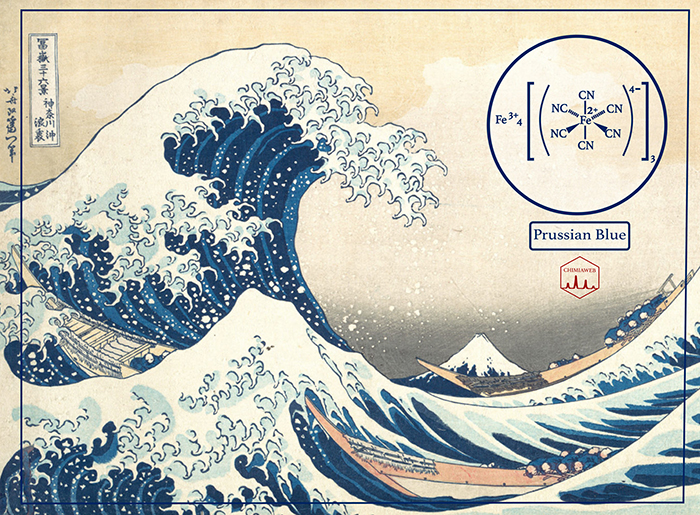Prussian blue is the first modern synthetic pigment, invented accidentally by two color makers, Diesbach and Dippel, in about 1706. The pigment formation was the result of the chemical reaction of iron oxidation. Its intense blue color arises from an electron transfer between the iron (II) and iron (III) ions. Because of its low cost and highly tinting strength, Prussian blue was widely used in paintings by artists such as Antoine Watteau, William Turner, Gainsborough, Van Gogh and Pablo Picasso in his famous “blue period”.
Its popularity spread so rapidly that it even reached Japan, where it was used by Hokusai for his iconic painting “The Great Wave off Kanagawa”. As fading of Prussian blue was observed in some of historic paintings, the factors, which might influence instability of pigment, have been investigated, including the method of preparation and addition of white pigment.
-Painting: “The Great Wave off Kanagawa” by Hokusai

